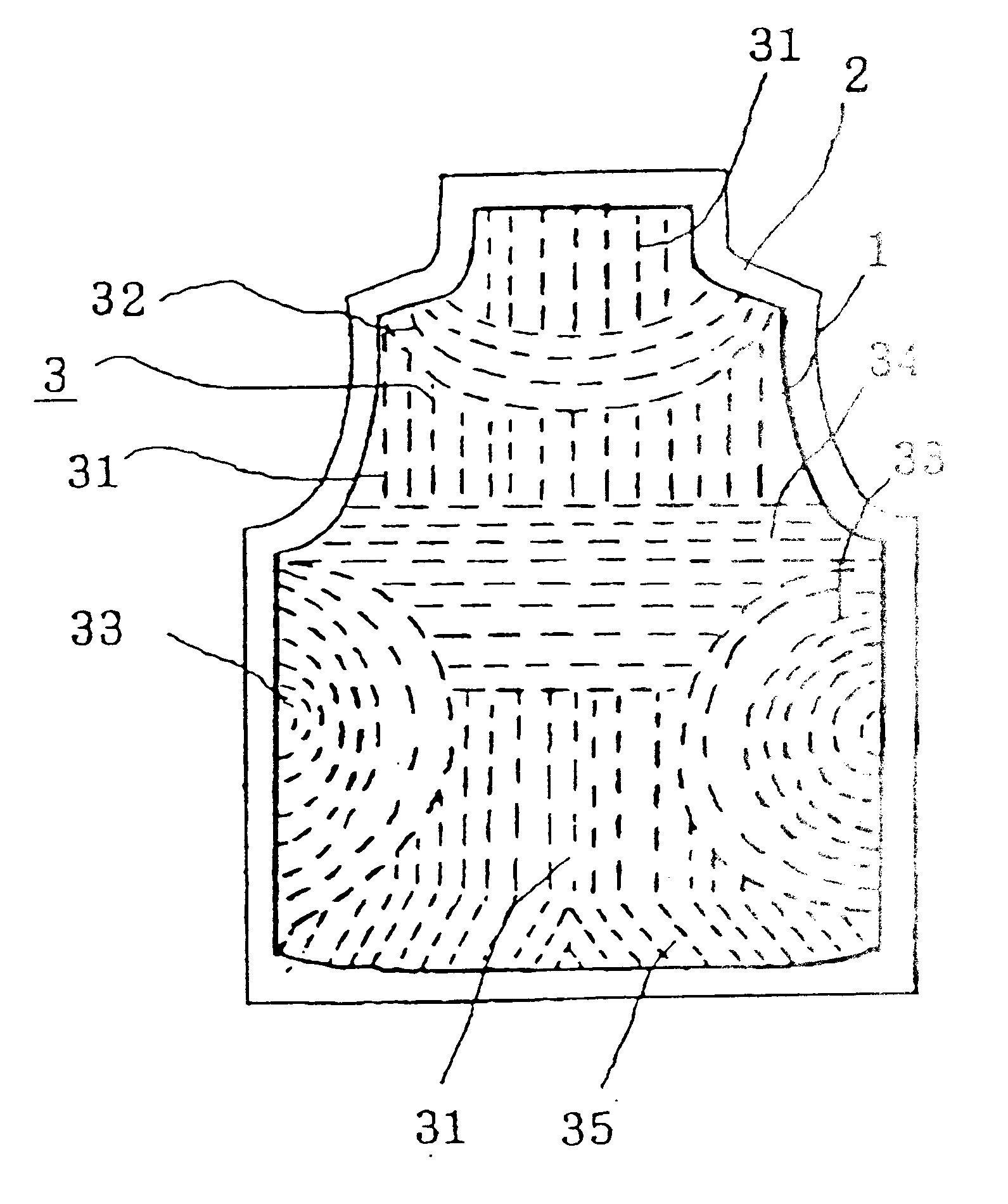Method of making convexities and/or concavities on cloths of a garment
a technology of convexities and/or concavities, applied in the field of garments and methods for forming convexities and/or concavities on cloth for a garment, can solve the problems of poor variation, troublesome sewing operation, and difficulty in sewing with a sewing machin
- Summary
- Abstract
- Description
- Claims
- Application Information
AI Technical Summary
Benefits of technology
Problems solved by technology
Method used
Image
Examples
Embodiment Construction
In accordance with the present invention, a method for forming convexities and / or concavities on cloth for a garment comprises:
cutting a cloth or cloths including thermoplastic fiber into parts of the garment;
sewing the parts into a shape of the garment;
laying at least one piece of thermo-shrinkable cloth on at least one part of at least one of the cloths of the garment after or before said sewing;
sewing the thermo-shrinkable cloth, and the garment or the cloth thereof with stitches of water-soluble threads;
heating the sewn cloths by heating means under dry condition and without applying any pressure to the cloths so as to permit the thermo-shrinkable cloth to shrink and form convexities and / or concavities on the cloth or cloths of the garment; and
solving and removing the water-soluble thread so as to separate the cloth of the garment from the thermo-shrinkable cloth.
The convexities and concavities may be gathers.
The method may further comprise subjecting the cloth or cloths of the ...
PUM
| Property | Measurement | Unit |
|---|---|---|
| Width | aaaaa | aaaaa |
| Distance | aaaaa | aaaaa |
| Distance | aaaaa | aaaaa |
Abstract
Description
Claims
Application Information
 Login to View More
Login to View More - R&D
- Intellectual Property
- Life Sciences
- Materials
- Tech Scout
- Unparalleled Data Quality
- Higher Quality Content
- 60% Fewer Hallucinations
Browse by: Latest US Patents, China's latest patents, Technical Efficacy Thesaurus, Application Domain, Technology Topic, Popular Technical Reports.
© 2025 PatSnap. All rights reserved.Legal|Privacy policy|Modern Slavery Act Transparency Statement|Sitemap|About US| Contact US: help@patsnap.com



